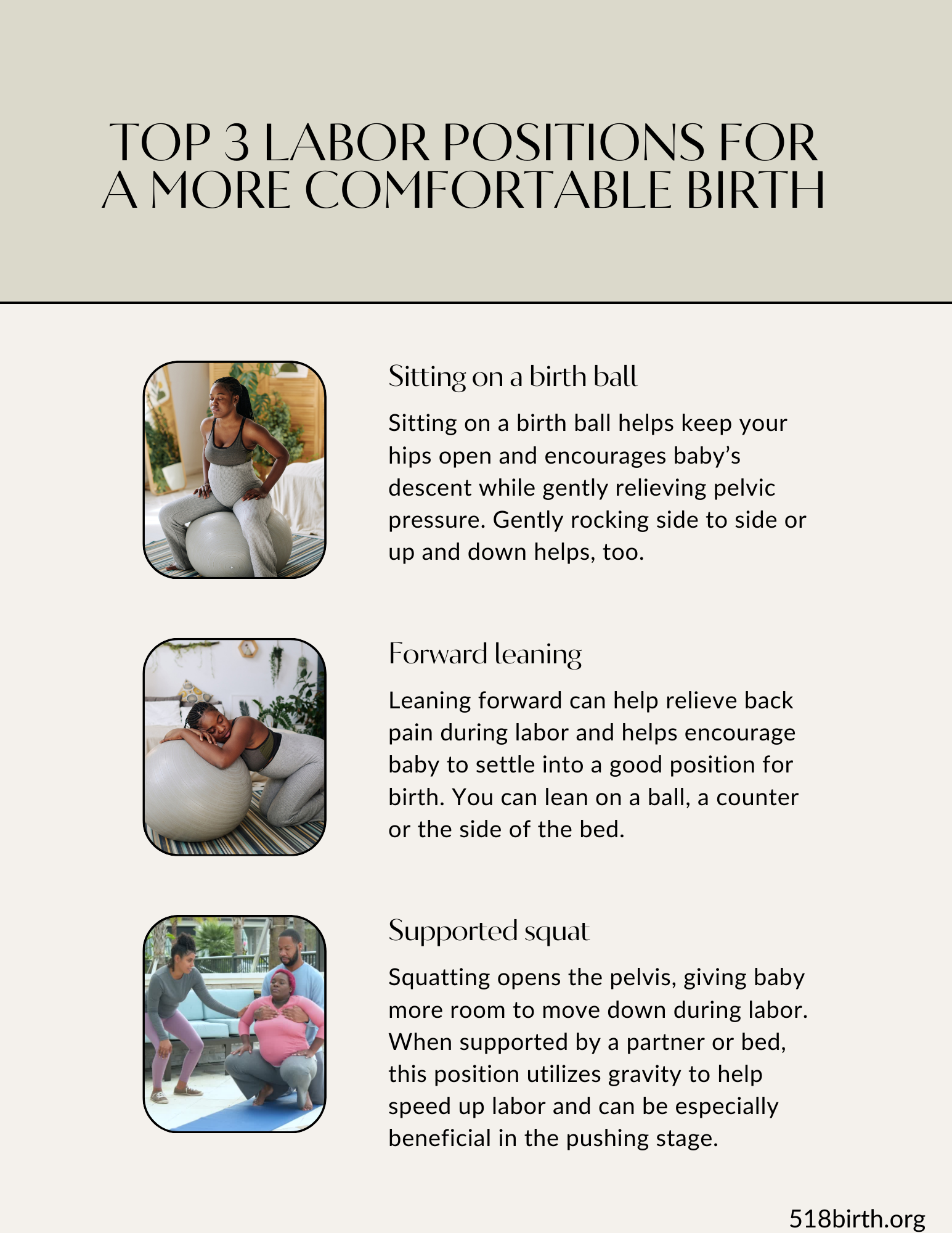Top 10 Labor Positions for a More Comfortable Birth
Choosing the right labor positions can make a big difference in how comfortable you feel during childbirth. Certain positions can help speed up labor, relieve pain, and even make contractions more effective. Here are 10 labor positions to try during different stages of labor, along with tips for when to use them and how they can help.
1. Standing and Leaning Forward
Leaning forward on a support like a chair, bed, or even your partner’s shoulders helps gravity do its job. This position encourages the baby to move down and can relieve lower back pain. It’s a great option for early labor or when you’re walking around to keep labor progressing.
Tip: Try rocking your hips side to side or back and forth to stay loose and relaxed.
2. Sitting on a Birthing Ball
Sitting on a birthing ball allows you to stay upright and mobile while providing a soft surface to rest. Gently bouncing or swaying can help relieve pressure in your hips and pelvis while promoting better circulation.
Tip: Use this position during early or active labor to keep labor moving, especially if you’re tired of standing.
3. Kneeling and Leaning Forward
Kneeling on a soft surface, like a pillow or folded blanket, while leaning forward on a bed or birthing ball takes the pressure off your lower back. This is especially helpful for back labor or if you’re feeling tired from standing.
Tip: You can also try rocking your hips in this position to ease pain and encourage the baby to move into the right position.
4. Squatting
Squatting opens up the pelvis, making more room for the baby to descend. It’s especially useful in the pushing stage, as it helps gravity work with you. You can squat holding onto a support or have someone help you balance.
Tip: Use a partner or support person to hold onto while squatting to prevent fatigue.
5. Hands and Knees
Getting on all fours can take the pressure off your back and help relieve discomfort from contractions. It’s also great for helping the baby rotate if they’re in a less-than-ideal position (like posterior). This position is often recommended during active labor.
Tip: Use this position with pelvic tilts (gently arching and relaxing your back) to encourage baby’s movement.
6. Side-Lying
Lying on your side can give you a much-needed rest while still keeping your pelvis open. It’s often recommended if you have an epidural, as it allows gravity to help without requiring you to be upright. It’s also useful in later labor if you're tired.
Tip: Place a pillow between your knees to keep your pelvis aligned and comfortable.
7. Sitting Upright in Bed
If you’re feeling tired or have an epidural, sitting upright in bed with the head elevated can help keep labor moving while giving you some rest. This position is also useful if your provider needs to monitor the baby closely.
Tip: Support your lower back with pillows and try to lean forward slightly to stay engaged in the process.
8. Lunging
If your labor is progressing slowly, lunging can help open the pelvis and encourage the baby to move down. You can lunge forward onto a chair or bed, using it for balance.
Tip: Alternate lunges from one leg to the other to help open up different parts of the pelvis.
9. Reclining with Support
Reclining back on a birthing ball, bed, or support pillow while keeping your knees bent allows you to relax and rest, especially if you’re tired. This position helps open the pelvis while allowing you to conserve energy.
Tip: Use this position during longer breaks between contractions or during the transition stage.
10. Walking
Walking during early labor can help get contractions going and keep them strong. It also helps relieve the pressure of contractions while allowing you to stay mobile. It’s a great way to use gravity to your advantage.
Tip: Walk slowly and stop to breathe through contractions as needed. Holding onto your partner for support can make this easier.
Choosing the Best Position for You
Every labor is different, and the positions that work best will depend on your body and how you’re feeling. Listen to your body and change positions as often as you need to stay comfortable. Keep in mind that labor may require a mix of movement and rest, so feel free to experiment with these positions to find what feels right for you.
By trying different labor positions, you can stay as comfortable and active as possible, giving you a better chance for a smoother, more positive birth experience.

